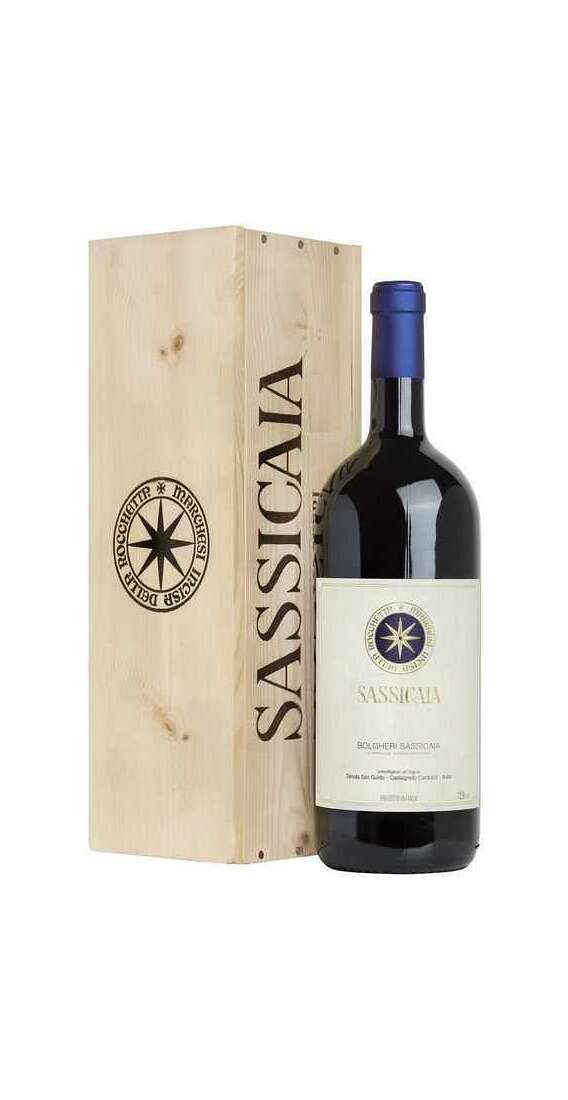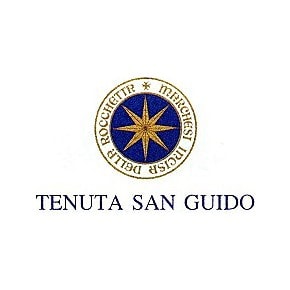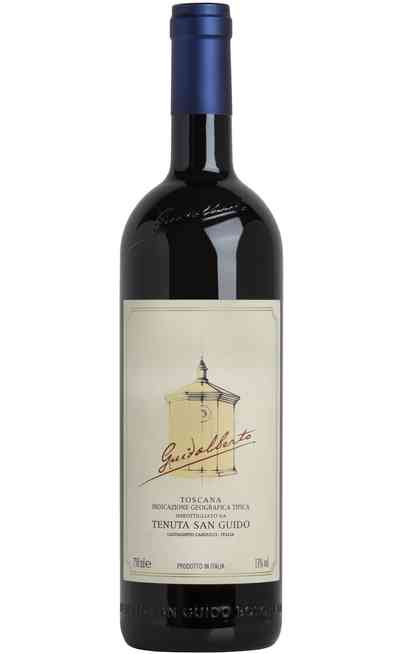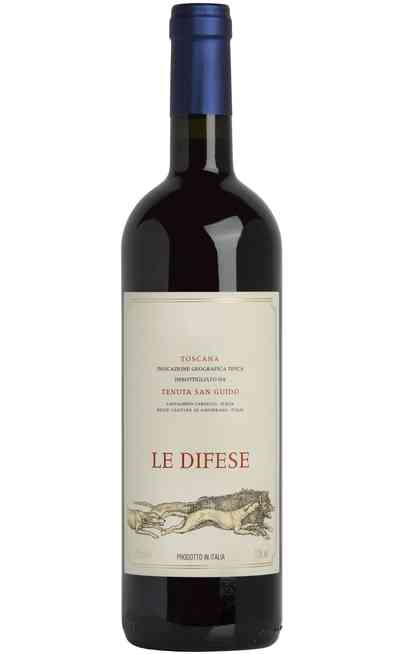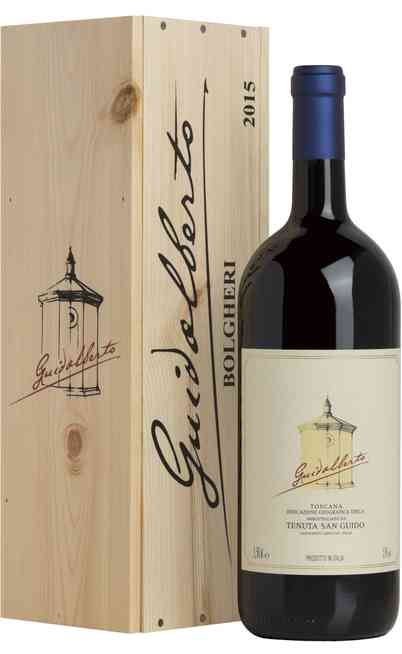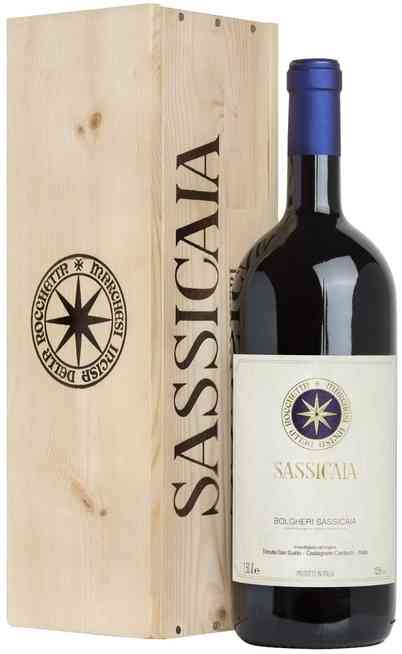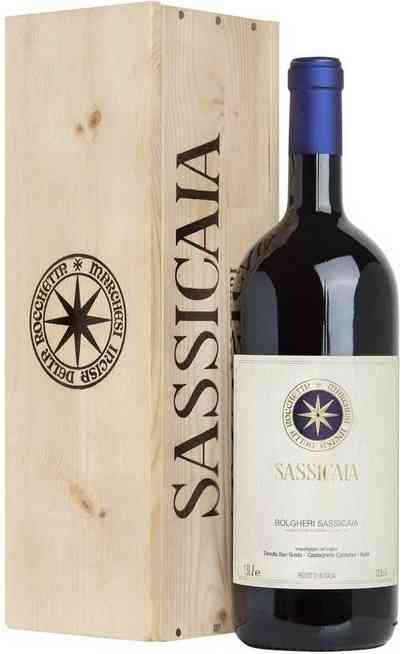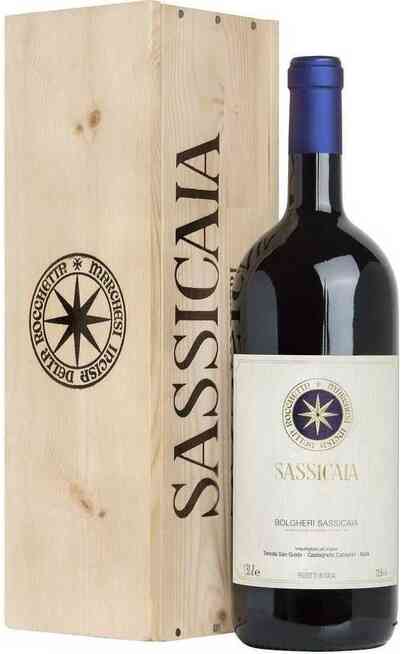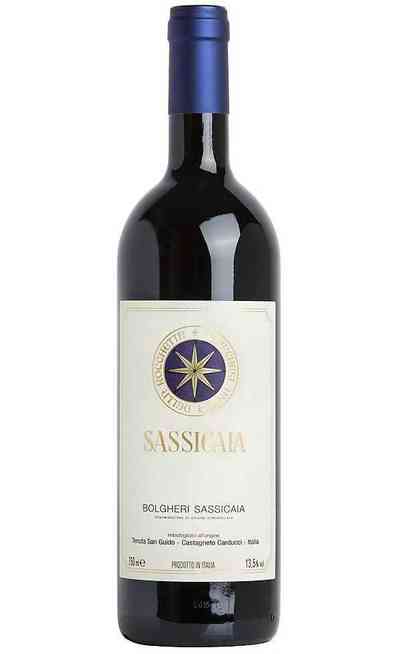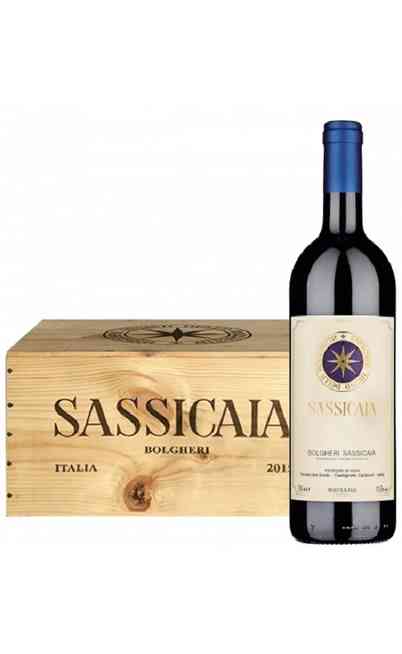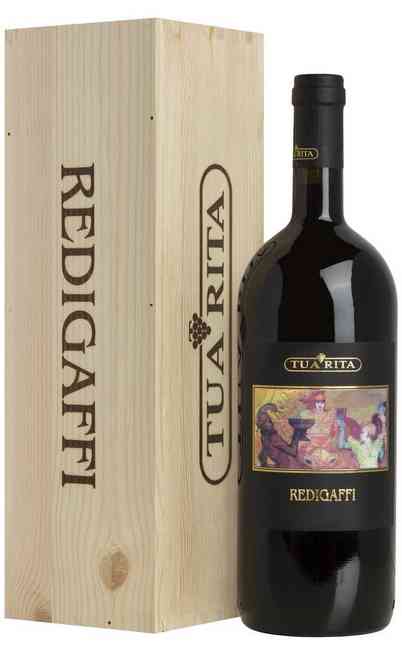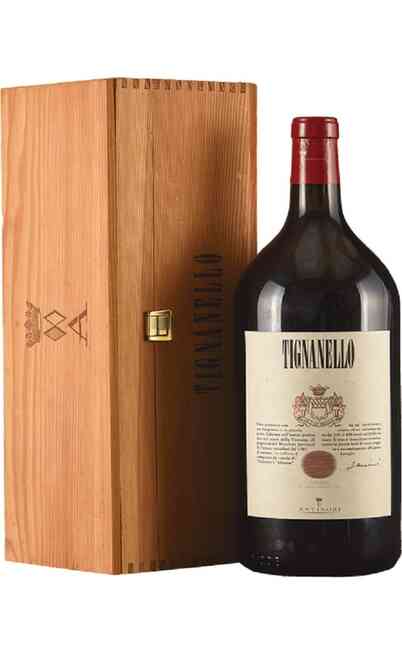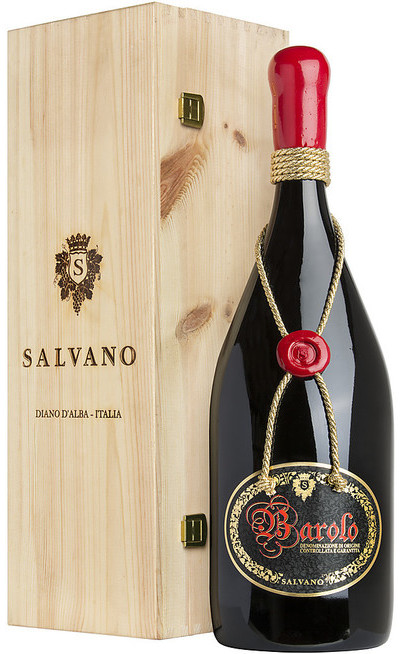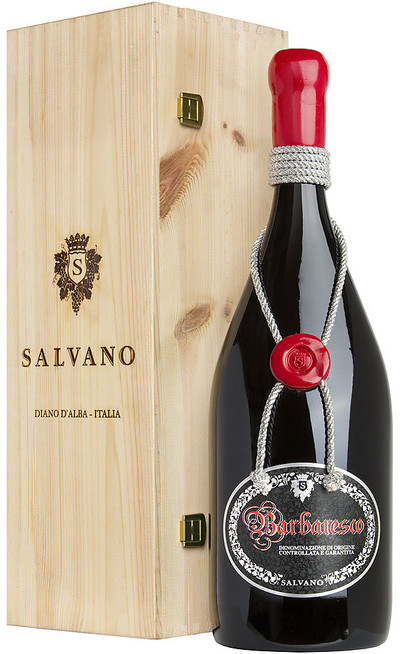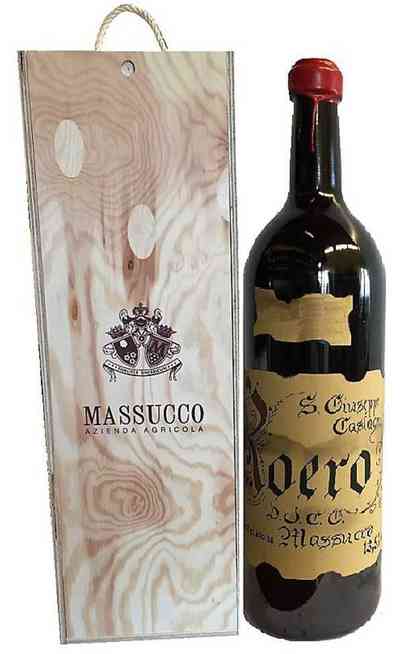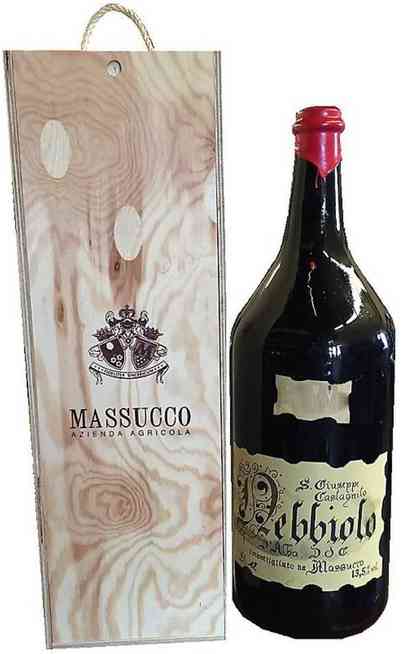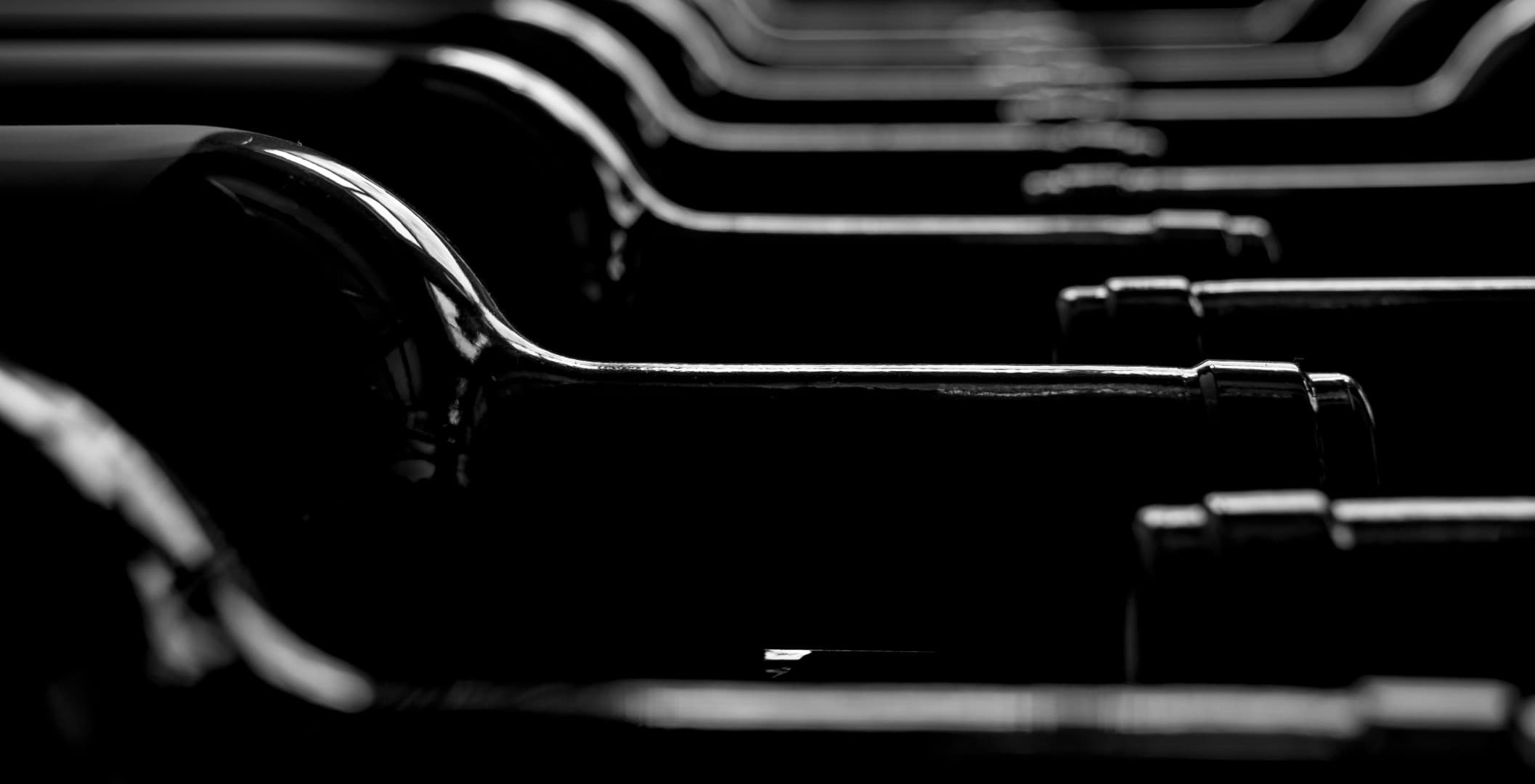Double Magnum 3 Liters Sassicaia 2020 in wooden case Tenuta San Guido
| Sommelier score | 94/100 | 2024 |
| Winery | Tenuta San Guido |
| Denomination | Bolgheri Sassicaia DOC |
| Vintage | 2020 |
| Grapes | 85% Cabernet Sauvignon, 15%Cabernet Franc |
| Alcohol content | 14,00% |
| Cl | 300cl |
| Sulfites | Contains sulphites |
| Code ICQRF | LI/638 |
| Winery headquarter | Tenuta San Guido - Bolgheri (LI) - Località Capanne, 27 |
| Bottle size | Magnum |
| Combination | Cold cuts and salami, Roast meat, Florentina Steak, mushroom risotto, Sliced beef, wild game |
| Region | Tuscany (Italy) |
| Style | Full-bodied and intense |
| Wine list | Bolgheri Sassicaia |
This bottle is a double size Magnum 3 liter capacity and is sold in a silk-screened wooden case.
The most famous wine in Italy boasts a DOC Bolgheri Sassicaia designation. There San Guido estate produces this magnificent wine composed of a refined blend, atypical for the production area, but of exceptional qualitative yield, especially if combined with the characteristics of the production area. The blend is made up of 85% Cabernet Sauvignon grapes and 15% Cabernet Franc grapes. All the vineyards are rigorously grown on soils with various and composite morphological characteristics with a strong presence of limestone areas rich in marl and stones and partially clayey; they are located at an altitude between 100 and 300 meters above sea level, with exposure to the West and South-West. The training system adopted is the spurred cordon system with a planting density for the more mature vines of between 3,600 vines per hectare and 5,550 vines per hectare. While, for younger plants the density reaches 6,200 vines per hectare of vineyard land. For the harvest, which takes place entirely by hand, we proceed first with the harvesting of the Cabernet Franc grapes, which are the first to reach excellent phenolic ripeness. Cabernet Franc is harvested in the very first days of September. Then we proceed with the harvesting of the Cabernet Sauvignon grapes which takes place starting from the first ten days of September and then ends, with the grapes from the vineyards of the Castiglioncello di Bolgheri hills, between the end of September and the very first days of October. The supreme vinification instead involves the soft pressing of the grapes and the subsequent fermentation in steel vats where the must remains at a controlled temperature of around 30°C maximum 31°C. The addition of external yeasts is absolutely not foreseen. Maceration lasts on average for at least 9 – 12 days for both Cabernet F. and Cabernet Sauvignon which are still kept separate. During this phase, pumping over of the musts is frequent. The subsequent malolactic fermentation is always left to complete in steel vats. Aging, which begins at the completion of malolactic fermentation, requires that the wine now composed as a blend is placed in French oak barriques where it refines for a period of 24 months before bottling and a subsequent refinement phase in glass before marketing.
Characteristics of Sassicaia Tenuta San Guido wine
For the description of this very refined red wine, prized, of great class and with an inimitable character, which in addition to distinguishing the taste of the wine itself, traces its history and local tradition, the WINE SHOP has relied on the description of the recognized Gambero Rosso's Guide to Italian Wines, where the Sassicaia it was judged with 3 glasses out of 3 in all the reference years and where it was awarded as red of the year 2013. The Sassicaia red wine from Tenuta San Guido is simply perfect. Every word can only seem superfluous and reductive in the face of the magnificence of this wine. Complex nose, broad and multifaceted, crunchy fruit, herbs and roots, undergrowth, iodine. Tannin and acidity, a bursting and elegant, sinuous structure, a chiaroscuro that indulges and retreats in a wonderful game of seduction. As we said, it is perfection. And for this reason it is the Red of the Year for us. The famous Italian oenologist Daniele Cernilli, artistic director of the renowned website “doctorwine.it”, describes it as a wine with an intense and lively ruby colour, of good concentration. The aromas are already complex, the fruity notes of blueberry are evident, as are the spicy and slightly leathery ones, with hints of graphite in the background. The flavor is tense, very elegant, with fine, barely noticeable tannins, comparable to those of the great Pauillacs, but with a greater silkiness and an enveloping body that leads to a subtle but extremely long finish. It will reach perfection only with a few more years in the bottle.
Notes from historians on the Tuscan Sassicaia wine
In the early twenties, the then student in Pisa, Mario Incisa della Rocchetta, listening to the elders of the family talk about wines, dreamed of one day creating a thoroughbred wine. His ideal, as for the aristocracy of the time, was Bordeaux. This is how the event was described in a letter to Veronelli on 11/6/1974. “The origin of the experiment dates back to the period between the years 1921 and 1925, when, as a student in Pisa and often a guest of the Salviati Dukes in Migliarino, I drank a wine produced from one of their vineyards on Mount Vecchiano which had the same unmistakable “bouquet” of an old Bordeaux that I just tasted rather than drank (because at 14 I wasn't allowed to drink wine) before 1915, at my grandfather Chigi's house. Then having settled with his wife Clarice in the Tenuta San Guido on the Tyrrhenian coast, he experimented with some French vines (whose cuttings he had recovered from the estate of the Salviati Dukes in Migliarino, and not from France) and concluded that the Cabernet had "the bouquet I was looking for and that I remembered from when I was a child. No one had ever thought of making a "Bordeaux" wine in Maremma, an unknown area from a winemaking point of view. The decision to plant this variety on Tenuta San Guido was partly due to the similarity he had noticed between this area of Tuscany and Graves, in Bordeaux. Graves, in fact, means gravel, the soil in this area of France is particularly stony and characteristic. Just like Sassicaia, in Tuscany, it names an area with the same characteristics. Once the very limited production began, from 1948 to 1967, Sassicaia red wine remained a strictly private domain, drunk only on the estate. Every year, however, only a few cases were left to age in the Castiglioncello cellar. Then the Marquis soon realized that as the wine aged, it improved considerably. As often happens with wines of great caliber, those that were previously considered defects, over time, were transformed into virtues. Subsequently, after having tasted the wine in convivial evenings with friends and relatives, Mario Incisa was encouraged to deepen his experiments and perfect his revolutionary winemaking style for that area. The 1968 vintage was the first to be put on the market, with a reception worthy of a Bordeaux Premier Cru. In the following years the cellar was modernized and prepared to accommodate a more consistent and refined production compared to the domestic production developed up to now. The cellar was moved to temperature-controlled rooms, steel vats were purchased to replace the wooden vats for fermentation, and French barriques were introduced into the winemaking process to optimize aging.

